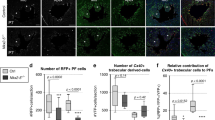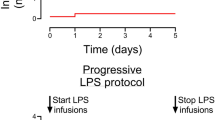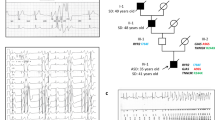Abstract
Understanding developmental changes in contractility is critical to improving therapies for young cardiac patients. Isometric developed force was measured in human ventricular muscle strips from two age groups: newborns (<2 wk) and infants (3–14 mo) undergoing repair for congenital heart defects. Muscle strips were paced at several cycle lengths (CLs) to determine the force frequency response (FFR). Changes in Na/Ca exchanger (NCX), sarcoplasmic reticulum Ca-ATPase (SERCA), and phospholamban (PLB) were characterized. At CL 2000 ms, developed force was similar in the two groups. Decreasing CL increased developed force in the infant group to 131 ± 8% (CL 1000 ms) and 157 ± 18% (CL 500 ms) demonstrating a positive FFR. The FFR in the newborn group was flat. NCX mRNA and protein levels were significantly larger in the newborn than infant group whereas SERCA levels were unchanged. PLB mRNA levels and PLB/SERCA ratio increased with age. Immunostaining for NCX in isolated newborn cells showed peripheral staining. In infant cells, NCX was also found in T-tubules. SERCA staining was regular and striated in both groups. This study shows for the first time that the newborn human ventricle has a flat FFR, which increases with age and may be caused by developmental changes in calcium handling.
Similar content being viewed by others
Log in or create a free account to read this content
Gain free access to this article, as well as selected content from this journal and more on nature.com
or
Abbreviations
- CamKII:
-
calcium/calmodulin-dependent kinase II
- CL:
-
cycle length
- FDAR:
-
frequency dependent acceleration of relaxation
- FFR:
-
force frequency relationship
- HLHS:
-
hypoplastic left heart syndrome
- NCX:
-
Na/Ca exchanger
- PLB:
-
phospholamban
- SERCA:
-
SR calcium-ATPase
- SR:
-
sarcoplasmic reticulum
- TOF:
-
tetralogy of Fallot
References
Schiffmann H, Flesch M, Hauseler C, Pfahlberg A, Bohm M, Hellige G 2002 Effects of different inotropic interventions on myocardial function in the developing rabbit heart. Basic Res Cardiol 97: 76–87
Szymanska G, Grupp IL, Slack JP, Harrer JM, Kranias EG 1995 Alterations in sarcoplasmic reticulum calcium uptake, relaxation parameters and their responses to beta-adrenergic agonists in the developing rabbit heart. J Mol Cell Cardiol 27: 1819–1829
Klautz RJ, Baan J, Teitel DF 1997 The effect of sarcoplasmic reticulum blockade on the force/frequency relationship and systolic contraction patterns in the newborn pig heart. Pflugers Arch 435: 130–136
Artman M, Graham TP Jr, Boucek RJ Jr 1985 Effects of postnatal maturation on myocardial contractile responses to calcium antagonists and changes in contraction frequency. J Cardiovasc Pharmacol 7: 850–855
Molenaar P, Bartel S, Cochrane A, Vetter D, Jalali H, Pohlner P, Burrell K, Karczewski P, Krause EG, Kaumann A 2000 Both beta(2)- and beta(1)-adrenergic receptors mediate hastened relaxation and phosphorylation of phospholamban and troponin I in ventricular myocardium of Fallot infants, consistent with selective coupling of beta(2)-adrenergic receptors to G(s)-protein. Circulation 102: 1814–1821
Cheung MM, Smallhorn JF, Vogel M, Van AG, Redington AN 2006 Disruption of the ventricular myocardial force-frequency relationship after cardiac surgery in children: noninvasive assessment by means of tissue Doppler imaging. J Thorac Cardiovasc Surg 131: 625–631
Pieske B, Trost S, Schutt K, Minami K, Just H, Hasenfuss G 1998 Influence of forskolin on the force-frequency behavior in nonfailing and end-stage failing human myocardium. Basic Res Cardiol 93: 66–75
Hasenfuss G, Schillinger W, Lehnart SE, Preuss M, Pieske B, Maier LS, Prestle J, Minami K, Just H 1999 Relationship between Na+-Ca2+-exchanger protein levels and diastolic function of failing human myocardium. Circulation 99: 641–648
Bers DM 2001 Control of Cardiac Contraction by SR and Sarcolemmal Ca Fluxes. Excitation-Contraction Coupling and Cardiac Contractile Force.
Hasenfuss G, Meyer M, Schillinger W, Preuss M, Pieske B, Just H 1997 Calcium handling proteins in the failing human heart. Basic Res Cardiol 92: 87–93
Meyer M, Bluhm WF, He H, Post SR, Giordano FJ, Lew WY, Dillmann WH 1999 Phospholamban-to-SERCA2 ratio controls the force-frequency relationship. Am J Physiol 276: H779–H785
Quaile MP, Rossman EI, Berretta RM, Bratinov G, Kubo H, Houser SR, Margulies KB 2007 Reduced sarcoplasmic reticulum Ca(2+) load mediates impaired contractile reserve in right ventricular pressure overload. J Mol Cell Cardiol 43: 552–563
Chen F, Ding S, Lee BS, Wetzel GT 2000 Sarcoplasmic reticulum Ca(2+)ATPase and cell contraction in developing rabbit heart. J Mol Cell Cardiol 32: 745–755
Fisher DJ, Tate CA, Phillips S 1992 Developmental regulation of the sarcoplasmic reticulum calcium pump in the rabbit heart. Pediatr Res 31: 474–479
Qu Y, Ghatpande A, El-Sherif N, Boutjdir M 2000 Gene expression of Na+/Ca2+ exchanger durig development in human heart. Cardiovasc Res 45: 866–873
Qu Y, Boutjdir M 2001 Gene expression of SERCA2a and L- and T-type Ca channels during human heart development. Pediatr Res 50: 569–574
Tipparaju SM, Kumar R, Wang Y, Joyner RW, Wagner MB 2004 Developmental differences in L-type calcium current of human atrial myocytes. Am J Physiol Heart Circ Physiol 286: H1963–H1969
Bradford MM 1976 A rapid and sensitive method for quantitation of microgram quantities of protein utilizing the principle of protein-dye binding. Anal Biochem 72: 248–254
Brattelid T, Tveit K, Birkeland JA, Sjaastad I, Qvigstad E, Krobert KA, Hussain RI, Skomedal T, Osnes JB, Levy FO 2007 Expression of mRNA encoding G protein-coupled receptors involved in congestive heart failure—a quantitative RT-PCR study and the question of normalisation. Basic Res Cardiol 102: 198–208
Vornanen M 1992 Force-frequency relationship, contraction duration and recirculating fraction of calcium in postnatally developing rat heart ventricles: correlation with heart rate. Acta Physiol Scand 145: 311–321
Endoh M 2004 Force-frequency relationship in intact mammalian ventricular myocardium: physiological and pathophysiological relevance. Eur J Pharmacol 500: 73–86
Huang J, Hove-Madsen L, Tibbits GF 2008 Ontogeny of Ca2+-induced Ca2+ release in rabbit ventricular myocytes. Am J Physiol Cell Physiol 294: C516–C525
Marston SB, Redwood CS 2003 Modulation of thin filament activation by breakdown or isoform switching of thin filament proteins: physiological and pathological implications. Circ Res 93: 1170–1178
Kruger M, Kohl T, Linke WA 2006 Developmental changes in passive stiffness and myofilament Ca2+ sensitivity due to titin and troponin-I isoform switching are not critically triggered by birth. Am J Physiol Heart Circ Physiol 291: H496–H506
Nassar R, Malouf NN, Kelly MB, Oakeley AE, Anderson PA 1991 Force-pCa relation and troponin T isoforms of rabbit myocardium. Circ Res 69: 1470–1475
Nassar R, Reedy MC, Anderson PA 1987 Developmental changes in the ultrastructure and sarcomere shortening of the isolated rabbit ventricular myocyte. Circ Res 61: 465–483
Artman M, Kithas PA, Wike JS, Strada SJ 1988 Inotropic responses change during postnatal maturation in rabbit. Am J Physiol 255: H335–H342
Bassani RA, Mattiazzi A, Bers DM 1995 CaMKII is responsible for activity-dependent acceleration of relaxation in rat ventricular myocytes. Am J Physiol 268: H703–H712
Huke S, Bers DM 2007 Temporal dissociation of frequency-dependent acceleration of relaxation and protein phosphorylation by CaMKII. J Mol Cell Cardiol 42: 590–599
Kassiri Z, Myers R, Kaprielian R, Banijamali HS, Backx PH 2000 Rate-dependent changes of twitch force duration in rat cardiac trabeculae: a property of the contractile system. J Physiol 524: 221–231
Pieske B, Kretschmann B, Meyer M, Holubarsch C, Weirich J, Posival H, Minami K, Just H, Hasenfuss G 1995 Alterations in intracellular calcium handling associated with the inverse force-frequency relation in human dilated cardiomyopathy. Circulation 92: 1169–1178
Weber CR, Ginsburg KS, Philipson KD, Shannon TR, Bers DM 2001 Allosteric regulation of Na/Ca exchange current by cytosolic Ca in intact cardiac myocytes. J Gen Physiol 117: 119–131
Haddock PS, Coetzee WA, Cho E, Porter L, Katoh H, Bers DM, Jafri MS, Artman M 1999 Subcellular [Ca2+]i gradients during excitation-contraction coupling in newborn rabbit ventricular myocytes. Circ Res 85: 415–427
Dan P, Lin E, Huang J, Biln P, Tibbits GF 2007 Three-dimensional distribution of cardiac Na+-Ca2+ exchanger and ryanodine receptor during development. Biophys J 93: 2504–2518
Schmid G, Pfitzer P 1985 Mitoses and binucleated cells in perinatal human hearts. Virchows Arch B Cell Pathol Incl Mol Pathol 48: 59–67
Ahuja P, Sdek P, MacLellan WR 2007 Cardiac myocyte cell cycle control in development, disease, and regeneration. Physiol Rev 87: 521–544
Author information
Authors and Affiliations
Corresponding author
Additional information
Supported by Grants HL-088488 (M.B.W.) and HL-077485 (R.W.J.) from the National Heart, Lung and Blood Institute, by Grant in Aid 0755537B (M.B.W.) from the American Heart Association Southeast Affiliate, and by financial support from Children's Healthcare of Atlanta.
Rights and permissions
About this article
Cite this article
Wiegerinck, R., Cojoc, A., Zeidenweber, C. et al. Force Frequency Relationship of the Human Ventricle Increases During Early Postnatal Development. Pediatr Res 65, 414–419 (2009). https://doi.org/10.1203/PDR.0b013e318199093c
Received:
Accepted:
Issue date:
DOI: https://doi.org/10.1203/PDR.0b013e318199093c
This article is cited by
-
Synergistic effects of hormones on structural and functional maturation of cardiomyocytes and implications for heart regeneration
Cellular and Molecular Life Sciences (2023)
-
Opportunities and challenges in cardiac tissue engineering from an analysis of two decades of advances
Nature Biomedical Engineering (2022)
-
Cardiovascular management following hypoxic–ischemic encephalopathy in North America: need for physiologic consideration
Pediatric Research (2021)
-
Cardiomyocyte maturation: advances in knowledge and implications for regenerative medicine
Nature Reviews Cardiology (2020)
-
Adult human cardiac stem cell supplementation effectively increases contractile function and maturation in human engineered cardiac tissues
Stem Cell Research & Therapy (2019)



